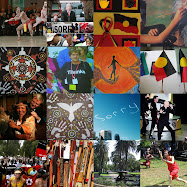
Dubbed "The Great Wall of Sydney", a 5 kilometre long fence is being built around parts of central Sydney in readiness for hosting leaders of 21 countries around the Pacific rim (Asia-Pacific Economic Cooperation forum: APEC) and 6000 assorted flunkies, hangers-on and groupies and a 1500 strong media pack.
The trouble is one leader, at record levels of unpopularity amongst his own people, is arriving with an entourage which includes 20 motorcade vehicles, back up decoy motorcade, sniffer dogs, secret service agents . . .This leader recently added $4 million to the tab for security by announcing he'd be arriving two days early (and leaving early- not staying for the main leaders' meeting).
Personally I think the fence is a great idea for containing the APECers and ensuring we citizens never have to encounter this most unwelcome visitor. An immigration detention centre (Baxter) in the middle of the desert would have been a more suitable venue.
Many Sydney people are, to put it mildly, pissed off. Apart from the fence there is an "exclusion zone", which includes the area around the Opera House and Botanic Gardens, and several streets. Roads will be blocked off at certain times. One-third of the NSW police force will be deployed. We have brand new water cannon, buses for holding demonstrator/prisoners, and they're clearing jails of weekend detainees to imprison demonstrators who step outside the strict rules.
All because of a leader who has "led" the "free world" into a mad war to protect "democracy". So our democratic freedoms are wrapped up in a 3m high fence.
The trouble is one leader, at record levels of unpopularity amongst his own people, is arriving with an entourage which includes 20 motorcade vehicles, back up decoy motorcade, sniffer dogs, secret service agents . . .This leader recently added $4 million to the tab for security by announcing he'd be arriving two days early (and leaving early- not staying for the main leaders' meeting).
Personally I think the fence is a great idea for containing the APECers and ensuring we citizens never have to encounter this most unwelcome visitor. An immigration detention centre (Baxter) in the middle of the desert would have been a more suitable venue.
Many Sydney people are, to put it mildly, pissed off. Apart from the fence there is an "exclusion zone", which includes the area around the Opera House and Botanic Gardens, and several streets. Roads will be blocked off at certain times. One-third of the NSW police force will be deployed. We have brand new water cannon, buses for holding demonstrator/prisoners, and they're clearing jails of weekend detainees to imprison demonstrators who step outside the strict rules.
All because of a leader who has "led" the "free world" into a mad war to protect "democracy". So our democratic freedoms are wrapped up in a 3m high fence.





































